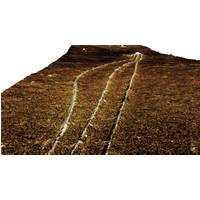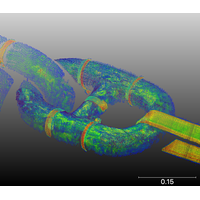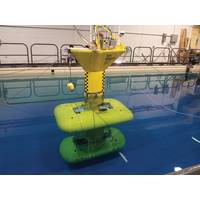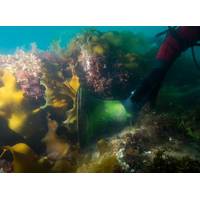
Kraken Reports Contracts Worth $2.8 Million
infrastructure, which must be inspected regularly.Under a recently signed Canadian government contract for our SeaVision underwater laser imaging platform, Kraken expects to be working with Parks Canada’s Underwater Archaeology Team in the Arctic this summer, as a continuation of the 2014 Franklin Expedition.In the last six months, Kraken has completed several successful demonstration trials and commercial contracts with offshore oil and gas customers in North and South America for laser scanning of a wide variety of subsea assets.PowerSubsea Pressure Tolerant Batteries – SeaPowerCompleted

Kraken Wins Canadian Government Contract
to conduct at-sea testing and evaluation of the SeaVision system at a variety of archaeologically significant sites including the HMS Erebus and HMS Terror at the National Historic Site of Canada, Nunavut.Kraken was previously involved in Parks Canada’s discovery of the HMS Erebus during the Franklin Expedition in Summer 2014.The SeaVision system delivers real-time, full color 3D point cloud images of subsea infrastructure with millimeter accuracy. These datasets create highly detailed models for 3D visualization to support complex machine learning and artificial intelligence algorithms used for

Kraken Set to Hunt for Avro Arrow Artifacts
, low power package. Onboard real-time processing enables on-the-fly beamforming and geo-referencing, which significantly reduces the overall processing timeline, a critical factor in these types of search and salvage applications." "AquaPix was a proven payload during the Franklin Expedition in 2014, operating onboard a Royal Canadian Navy AUV. We deployed the AUV in the morning, all processing occurred onboard the AUV in real-time, and after recovering the vehicle in the evening we immediately began reviewing the already-processed sonar images, with zero post processing required
All Hands on Deck: ROVs and AUVs Aid Search for Franklin
lead archaeologist for Parks Canada’s ongoing work in studying the wrecks of HMS Erebus and HMS Terror, “It’s an enthralling story of human fortitude, deprivation and sacrifice. Even the initial reports of men desperately resorting to cannibalism add a chilling element to it. The Franklin Expedition was well equipped with state-of-the-art equipment for that time and departed with much optimism with the objective of finally charting a Northwest Passage which had been an elusive goal since Elizabethan times. Finally, it would be realized. But, with all of these men to have disappeared nearly

Second Ship Found from Doomed 1800s Arctic Expedition
Explorers have found the wreck of HMS Terror, the second of two British ships lost in the disastrous 1845 Franklin expedition to Canada's Arctic Northwest Passage, Britain's Guardian newspaper said on Monday. The Arctic Research Foundation, a private group that sent a vessel to help look for the ship, found it in pristine condition at the bottom of a bay earlier this month, a spokesman told the paper. Sir John Franklin and his 128-member crew in the Terror and HMS Erebus all died after the vessels became stuck in ice during a search for the fabled Arctic passage between the Atlantic

The World’s Cold Ocean Lab
; marine biology, marine ecotourism, diving, and oil spill response. In Conception Bay South, Kraken Sonar Systems Inc. has developed the a Synthetic Aperture Sonar; a technology it was recently invited by Parks Canada to bring to the Arctic in a successful search for the lost vessels of the Franklin expedition. In the Town of Clarenville, SubC Imaging is quickly becoming known for its subsea camera technology, its soon-to-market 4k camera the first of its kind. These companies are all examples of startups within the past five years that are already having a significant impact on their respective

Deep Thinkers: Advancing Underwater Technology
data storage, all of which helps to reduce the cost of their system while improving quality and efficiencies. David Shea, Kraken Engineering Manager, was recently invited to take this technology on a successful Arctic mission to locate the HMS Erebus, one of the long-lost vessels of the ill-fated Franklin expedition, but major applications lie in the defense and offshore oil and gas sectors. “We are the only company in the world that can do full-resolution, onboard, real-time processing,” says Shea, adding that their agility as a smaller team allows them to work with clients to create custom

Kraken Sonar Begins Trading Today
;s team of engineers and scientists have produced, validated through sea trials and sold SAS systems to several defense contractors and commercial companies for advanced seabed survey. Kraken’s technology was selected by Defence Research and Development Canada for deployment in the Franklin Expedition search of 2014, earning recognition from scientists and government agencies for its differentiation and performance in producing images of the Arctic seafloor that were unprecedented in their clarity and accuracy.

Bell Recovered from Wreck of HMS Erebus
The ship's bell recovered from the recently discovered Franklin Expedition shipwreck, HMS Erebus, was unveiled by the Honorable Leona Aglukkaq, Minister of the Environment and Minister responsible for Parks Canada. The artifact was recovered during dives and archaeological investigation by Parks Canada's underwater archaeology team in September. The bell was found on the deck adjacent to the ship's displaced windlass (a form of anchor winch), above which it was originally mounted. Since then, the bell has been undergoing conservation stabilization and additional research. The bell is intact and



 February 2024
February 2024





